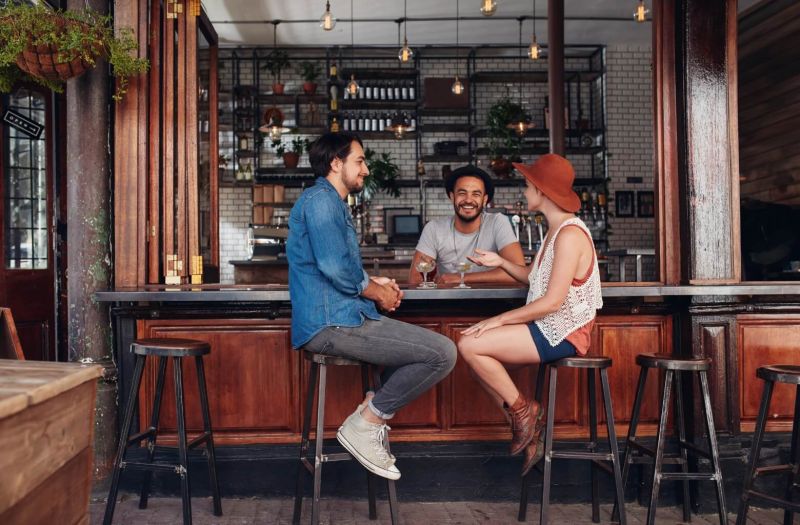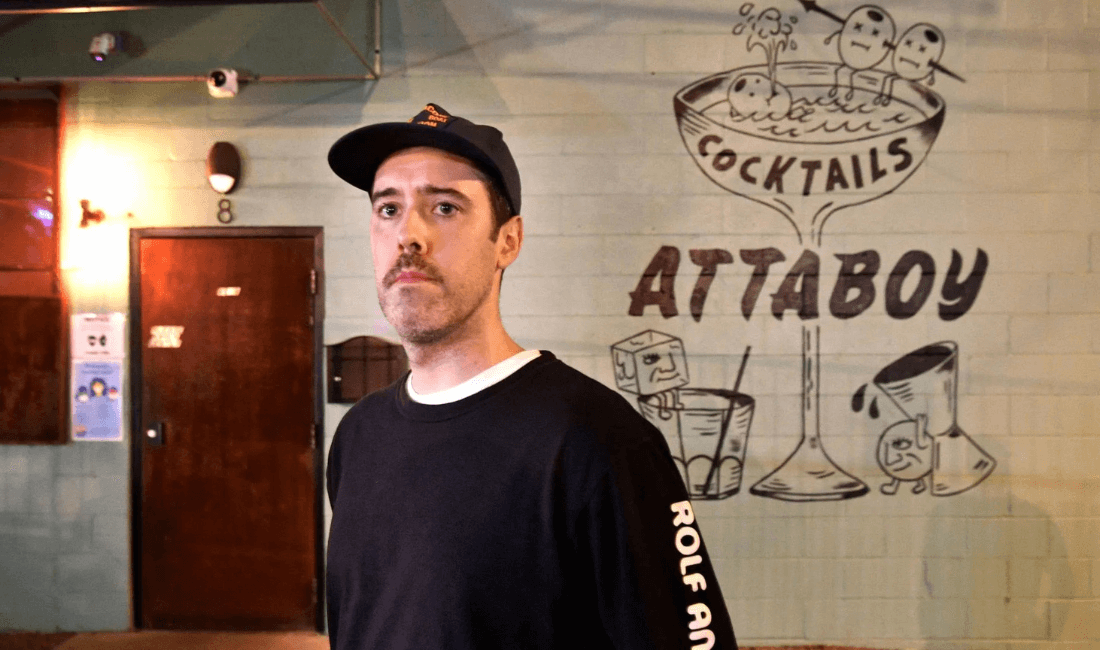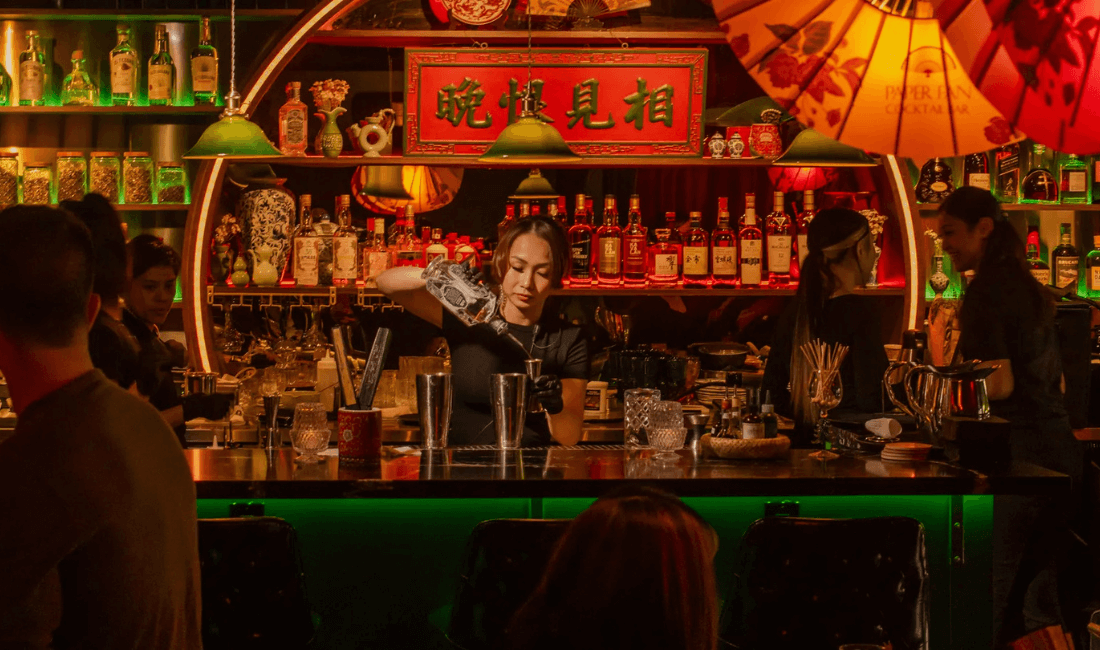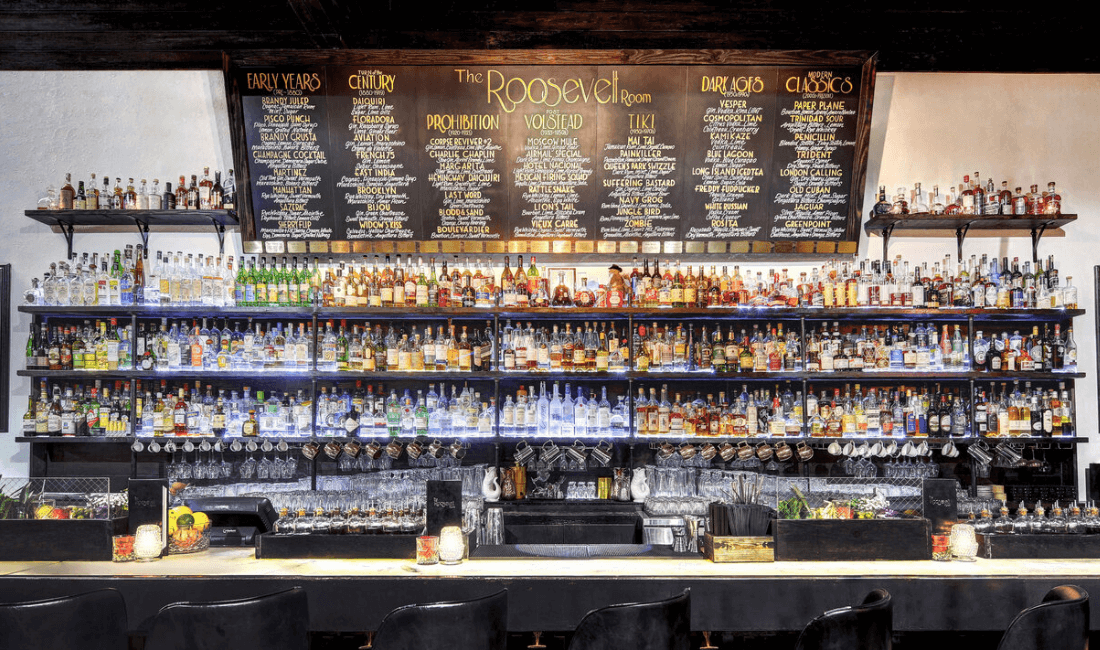Educating Bartenders Worldwide.
By Beverage Trade Network

On a quiet Tuesday night in New York City, you walk into a small, unmarked bar. There’s no menu, no list of signature drinks. Just a bartender who leans in and asks, "What are you in the mood for today?"
Freestyle mixology is an approach that reimagines how we order and experience cocktails. Rather than browsing a printed list, guests engage in a brief, personalized conversation with the bartender, who then crafts a drink tailored to their mood, taste, or even a memory. It’s an intuitive, improvisational art form that prioritizes human connection over formulaic service. More bars are adopting this no-menu method as a way to foster authenticity in an industry often driven by speed and volume. It’s a reaction to more than just changing tastes; it reflects a cultural pivot in hospitality. Guests are craving deeper experiences, ones that feel personal, intentional, and unscripted. Freestyle mixology delivers exactly that. It brings spontaneity back to the barstool, replacing pre-selected choices with a kind of drinkable storytelling. In an era of curated feeds and cookie-cutter experiences, the simple act of asking can be surprisingly powerful.

Source: Axios Nashville
Freestyle mixology has its roots in the early 2000s speakeasy revival, when bars began embracing secrecy, intimacy, and innovation over flashy menus. These hidden venues often relied on conversation rather than printed lists, creating a more immersive and personalized experience. At the same time, the concept paralleled the omakase style of Japanese dining, where chefs guide the meal based on seasonal ingredients and customer cues. In both cases, trust and expertise replace choice and control.
This movement gained further momentum in the post-pandemic era. As social norms shifted, many guests began craving genuine, unfiltered experiences, ones where human connection mattered more than curated aesthetics. The no-menu format offered exactly that, an invitation to be known, listened to, and served in a uniquely personalized way. Bars like Attaboy in New York became synonymous with this approach, and as their success stories spread, more establishments across the U.S. began adopting freestyle service, not for novelty, but to bring back hospitality in its purest form.
Going menu-less demands more than creativity. Bartenders must have deep knowledge of spirits, seasonal ingredients, flavor theory, and the emotional intelligence to read each guest. It’s like jazz: improvised, responsive, yet grounded in mastery. Training at some bars includes improvisation exercises, classic recipe memorization, and even guest profiling. Understanding the nuances between citrus varietals, bittering agents, and house-made syrups is only part of the skillset. The real test is applying this knowledge under pressure. A bartender might hear “bright but earthy” and know exactly how to layer gentian liqueur with grapefruit, basil, and gin to evoke that profile. Beyond ingredients, mood matters. Body language, tone of voice, and conversation cues all influence a bartender’s decision-making. That guest who hesitates before saying, “I’m open to anything,” might be nervous about bitterness or high-proof spirits.

Source: Bon Appétit
For guests, this style feels more like a dialogue than a transaction. They aren’t choosing from a list; they’re co-creating. It turns a night out into something memorable. A well-made freestyle cocktail can echo nostalgia, capture a vibe, or surprise someone into discovering a new favorite spirit.
That act of personal attention can resonate deeply. Imagine walking into a bar and saying, “I’m in the mood for something that reminds me of winter in Vermont.” A skilled bartender might reach for maple syrup, rye whiskey, and a smoky amaro. Suddenly, it’s not just a drink, but a story. Guests often linger longer, ask more questions, and share more about themselves in freestyle environments. This strengthens not just the individual interaction but also long-term loyalty. Guests return not for a particular drink, but for the person behind the bar.
Freestyle mixology isn't without its hurdles. It requires a diverse inventory, staff with deep expertise, and a system that balances creativity with speed. During peak hours, the slower pace of custom drink-making can strain operations. Some bars counter this with hybrid models, offering a menu for volume service, freestyle at the bar. Inventory must be carefully managed to prevent waste. Unlike menu-driven bars that predict sales based on known recipes, freestyle operations must remain flexible without becoming inefficient. That means sourcing ingredients with multiple use cases and training staff to cross-utilize effectively.
Time is another constraint. Crafting a personalized drink often takes longer than pouring a standard cocktail. Bars need workflows that allow for freestyle mixology without bottlenecking service. Pre-batched components and prep-ahead syrups can help keep things moving. Staffing is critical. Not every bartender thrives without a script. The model demands not just knowledge, but confidence, adaptability, and emotional presence. Training programs at places like The Roosevelt Room in Austin, Texas, focus on improvisation, flavor theory, and guest interaction, all essential for freestyle success.

Source: The Roosevelt Room
The no-menu movement is redefining what it means to run a bar. It empowers staff, fosters guest loyalty, and shifts the focus from product to experience. Without a static menu, the bar becomes a stage for live creativity, a place where human connection matters as much as technique. It also changes how bars market themselves. Without a signature drink list to post online, much of the appeal comes from word of mouth and the unique experiences guests share. In that way, freestyle bars build community as much as clientele. This model supports a healthier culture behind the bar, too. When bartenders are trusted to create, they’re more engaged. It turns a service job into a creative outlet. And when staff are seen as artists rather than order-takers, the bar becomes a destination, not just a pit stop. It also promotes mindful drinking. Without flashy names or impulse choices, guests engage more deliberately, often savoring fewer but more meaningful drinks. A slower, more intentional pace can reduce overconsumption and elevate the overall atmosphere.
Freestyle mixology isn’t just a creative detour, it’s a meaningful evolution in how hospitality is experienced and delivered. While not every venue can accommodate this approach, it's finding fertile ground in boutique bars, lounges, and curated spaces where personalization matters most. As the bar scene continues to evolve, freestyle service is poised to grow in reach and influence. Even technology is joining the movement, with some bars using guest input systems to inform customized drink experiences, merging digital efficiency with human touch. And the model may expand beyond cocktails, influencing wine service, desserts, and even full dining experiences based on dialogue rather than decisions made from menus. Ultimately, freestyle mixology reminds us of the heart of great hospitality: slowing down, asking questions, and creating something unique for each guest. In a world filled with pre-set choices and algorithm-driven encounters, the simple act of crafting a drink through conversation feels refreshingly rare, and that’s what makes it unforgettable.
Header image source: The Crafty Cask
Also Read:
Bourbon is Best for Fall Cocktails: Listing the Top Bourbons for Autumnal Mixology
Asian Cocktails: A Lasting Trend or a Passing Fad?
What Will a Profitable Cocktail List in 2025 Look Like?